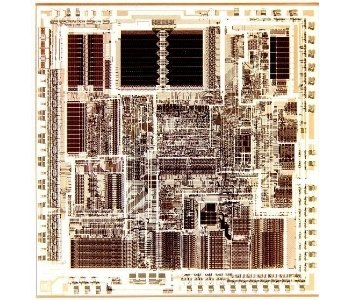|
The 286 Processor
Provided significant enhancements over its predecessor, the 8086/8088 processor.
The 286 processor, or rather 80286 processor, was actually first introduced by Intel in the year of 1982. The 286 family processor mainly introduced protected mode and was used in the computer giant IBM's XT range of computers. Over the years, CPUs have gone through many changes since Intel brought out the first one. IBM chose Intel’s 8088 processor for the brains of the first PC.This choice by IBM is what made Intel the perceived leader of the CPU market. Intel remains the perceived leader of microprocessor development. New contenders since then developed their own type and standard of technologies for their own individual microprocessors. Intel maintains to be more than just a viable source of new technology in this market, while the likes of the ever-growing AMD a close second in thier shadow. The first four generations of Intel processor namely the 8 & #8243 named series, (you may well hear the technical bods refer to this family of chips as the 8088, 8086, and 80186). Progressing onwards up to the 80486, or more simply refferenced as the '486'. However nowadays these type of chips are considered the dinosaurs of the computer world. The (very) older PC’s which are based around these processors are more likely now to be door stops or sitting in the garage or outhouse now collecting dust. They're not much use anymore, but some computer geeks don’t like throwing them out because they still work. Hmmm, is that you? The Intel 80286 (produced in 1982) was a 16-bit processor, consisting of 134,000 integrated transistors capable of addressing up to 16MB of RAM (Random Access Memeory). Additional to the increased physical (RAM) memory support, the 286 processor is able to work with virtual memory, that using hard drive space for memory. Although slower than using RAM this allowed for expandability. The 286 processor was in fact the first real processor to be produced. It was sthe first to introduce the concept of protected mode operation. This gave the 286 processor the ability to multitask. Multitasking is being able to have different programs run separately but at the same time. This ability was never taken advantage of by DOS (Disk Operating System) but future Operating Systems (OS), such as Windows, could and did play with this new feature. There was one drawback of this functionality though, that while it could switch from real mode to protected mode. Real mode was intended to make it backwards compatible with the 8088’s processors and programs. It couldn't switch back to real mode without a warm reboot, that is a reset. However, this chip was used by IBM in its Advanced Technology (AT) PC's and was used in lots of IBM-compatible type machines. The 286 processor ran at speeds of 8, 10, and 12.5 MHz, also later editions of the chip ran as high as 20 MHz. While these chips and the PC's they're in are considered paperweights today, they were rather revolutionary for that time in the history of computers period. Return to Computer Hardware Terminology page. Go forward to Specification page. Have a look at the latest pages updated here. Return from 286 Processor to Home page.
PLEASE feel free to use this button and donate You Are Secure! so Machine-Information-Systems.Com can keep helping you.
|
